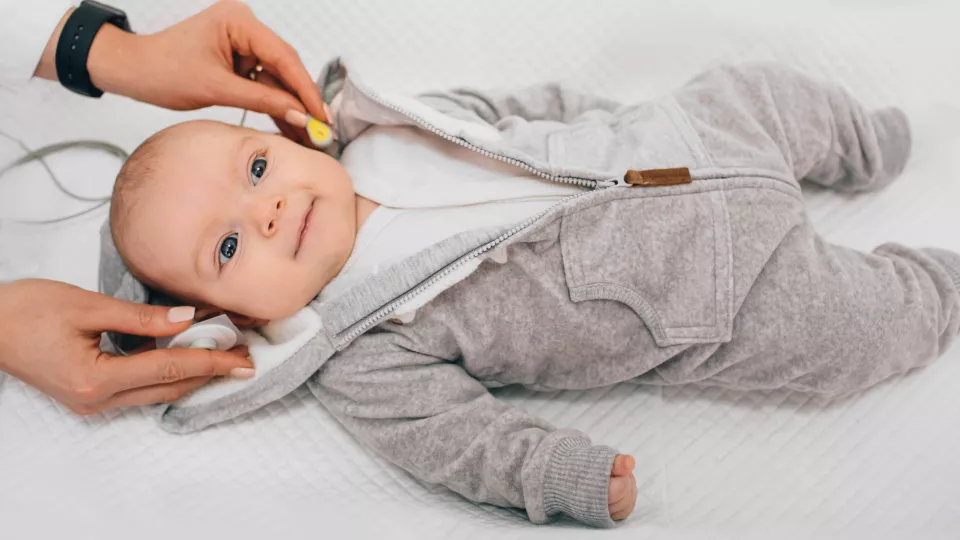
What Parents Should Know About Newborn Hearing Screenings
In the United States, approximately 3 out of every 1,000 infants are born with hearing loss. Surprisingly, over 90% of these children are born to parents who themselves have normal hearing.
As mandated by state regulations, newborn hearing screenings are performed in all hospitals where babies are delivered. These screenings are essential for early detection, which Kristina Rousso, AuD, an audiologist with the California Leadership Education in Neurodevelopmental and Related Disabilities (CA-LEND) training program at Children’s Hospital Los Angeles, says is crucial for achieving optimal outcomes in a child's development.
“From birth, babies’ brains are constantly taking in information to support development of listening, language, and reading,” Dr. Rousso says.

Dr. Rousso says that she and her colleagues follow the Joint Committee on Infant Hearing Guidelines 1:3:6 model—identification through screening by 1 month of age; diagnosis of hearing level and type with a pediatric audiologist by 3 months of age; and treatment with hearing devices by 6 months of age.
What can cause hearing loss at birth?
Below are some of the reasons that a baby may be born with hearing loss:
- Genetic factors
- Maternal viruses during pregnancy, such as cytomegalovirus (CMV) and rubella
- Extended stays in neonatal intensive care, due to risk factors such as low birth weight, lack of oxygen, and phototherapy treatment
Two types of newborn hearing screenings
There are two primary types of newborn hearing screenings: otoacoustic emissions (OAE) and auditory brainstem response (ABR). “Both are painless, fast, and easy to measure,” Dr. Rousso says.
Otoacoustic emissions involves playing different sounds into the baby's ear to detect a response from the inner ear
Auditory brainstem response measures the brain's response to sounds and volume levels through electrodes placed on the baby's head during sleep.
How to read the results—pass or refer?
Hearing screenings provide a “pass” or “refer” result. Here is what each means.
Pass: A “pass” indicates your baby likely has normal to near-normal hearing. “However,” Dr. Rousso says, “it’s still important to monitor speech and language development and the baby’s responses to different sounds in the environment.”
If your baby does not respond to sounds appropriately at home, or their speech and language development is not advancing, schedule a hearing test appointment with a pediatric audiologist, who can evaluate and treat your child for possible hearing loss.
Refer: A ”refer” result means that more information is needed to determine if the baby has hearing loss in one or both ears. A second hearing test will be administered before you and your baby are discharged. If the baby does not pass the second time, you will be referred to a pediatric audiologist for a comprehensive diagnostic evaluation.
Dr. Rousso emphasizes the importance of promptly taking your baby to a pediatric audiologist for a complete evaluation if the baby does not pass the hearing screen, or if the baby is not developing speech or language. The sooner hearing loss is diagnosed and treated, the faster a baby’s brain can start to develop speech and language.


